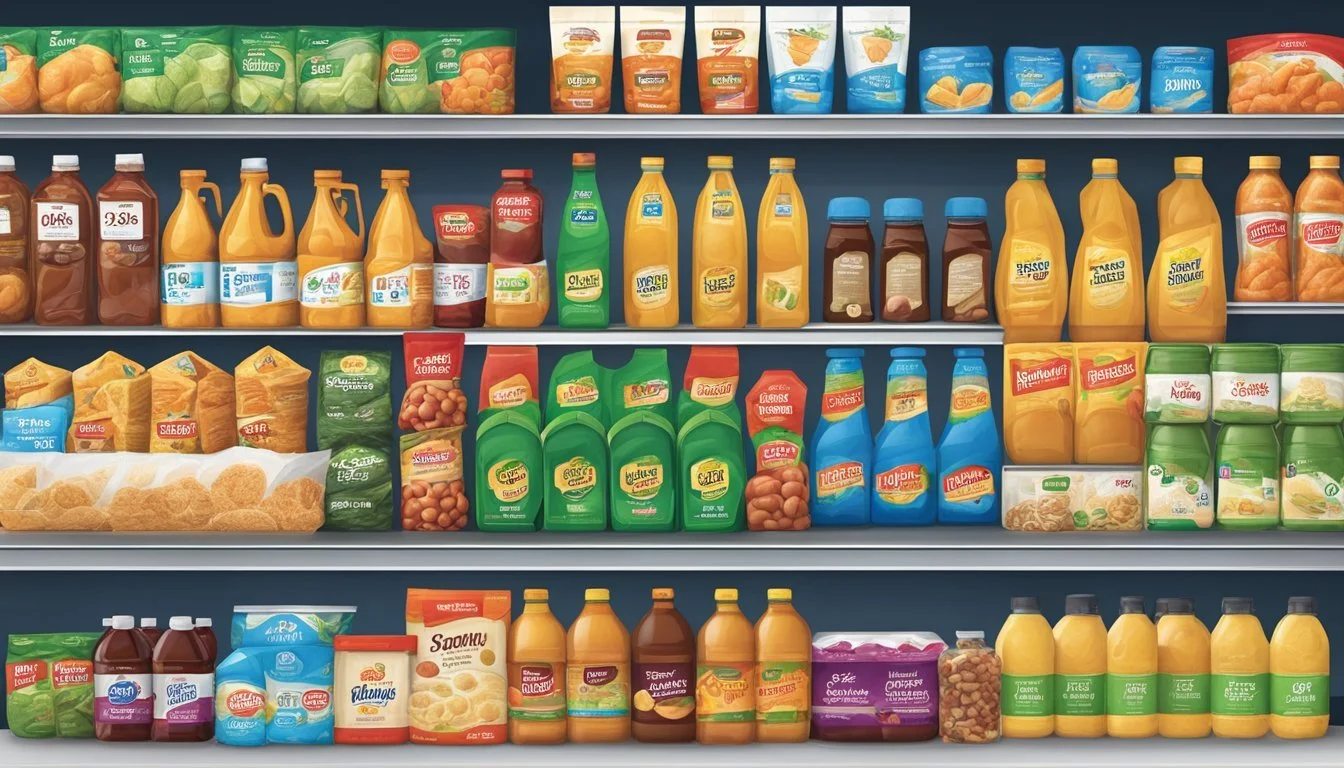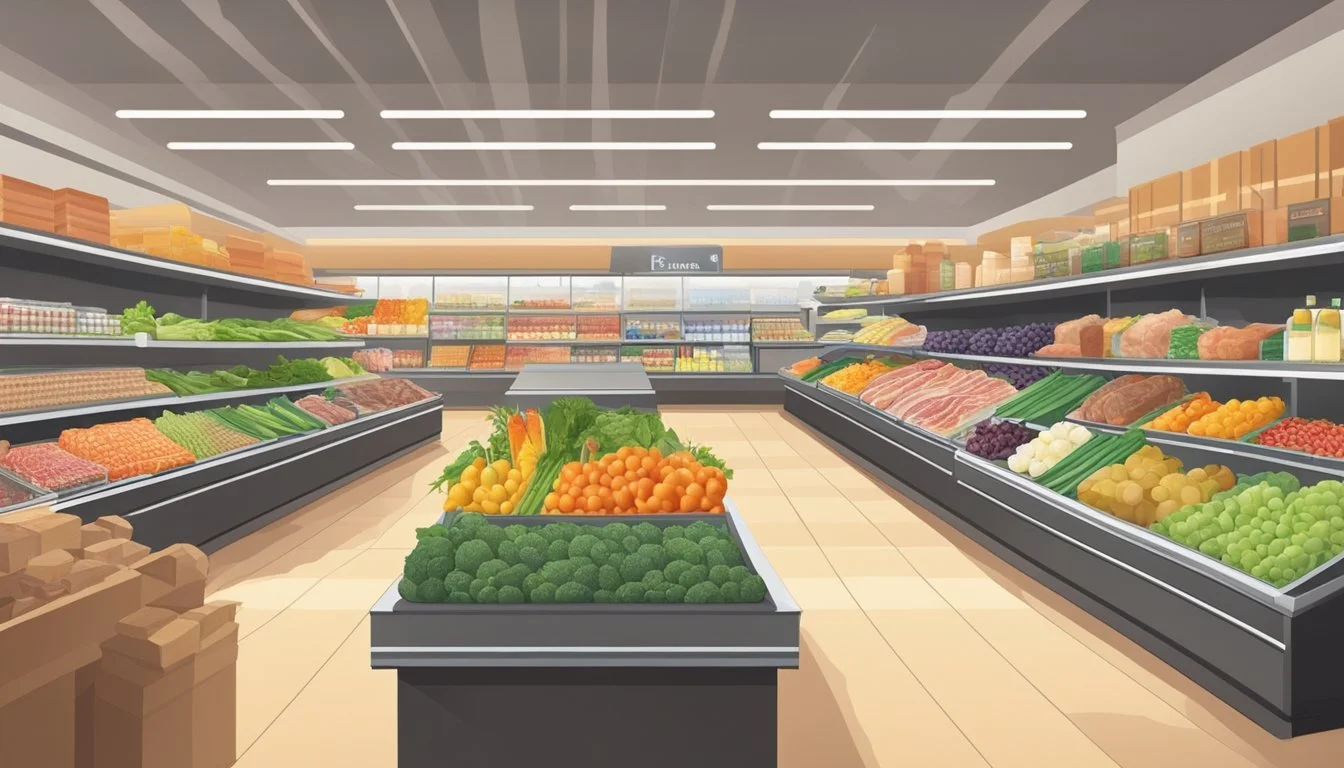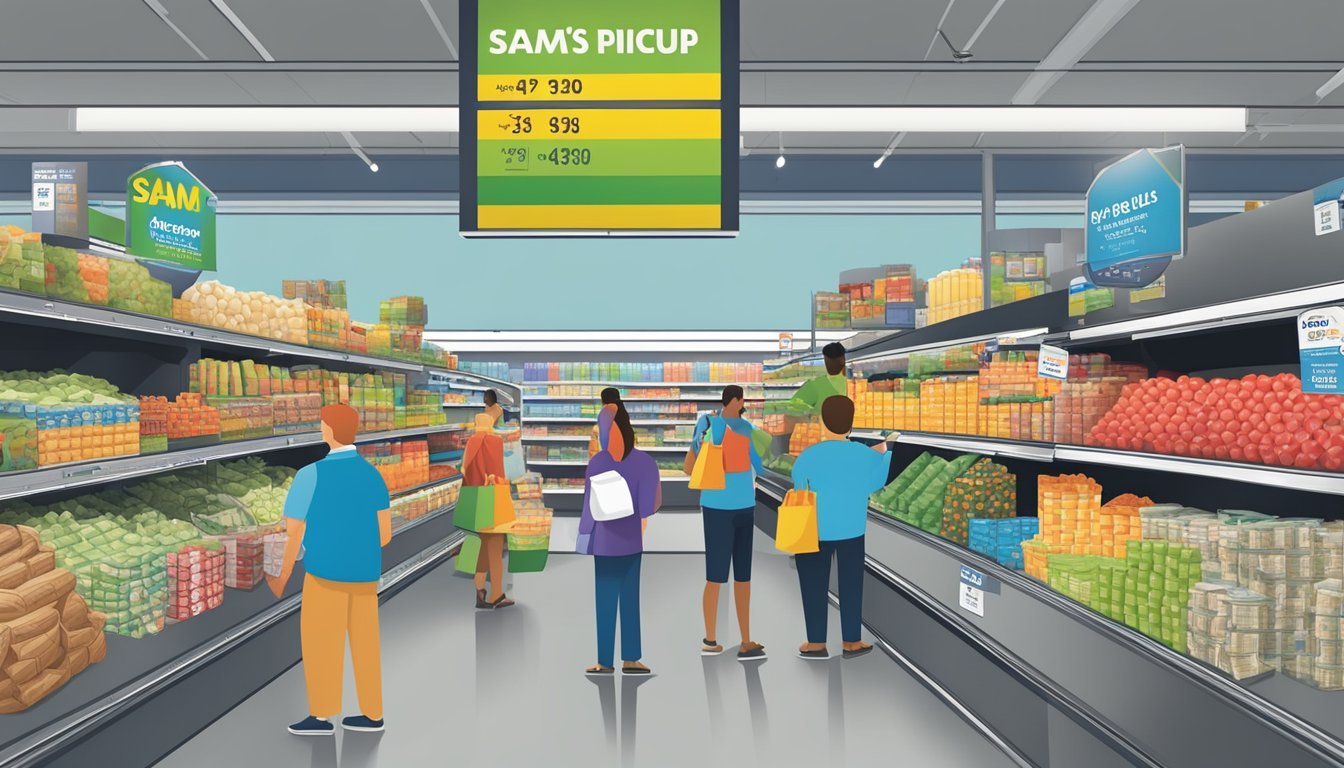Is Sam's Club Cheaper Than Hy-Vee?
Comparing Grocery Prices and Membership Benefits
Part of Our Grocery Store Guide with Details on Sam's Club Prices and Hy-Vee Prices
When shopping for groceries and household items, consumers are keen on finding both quality and value. Stores like Sam's Club and Hy-Vee are among the numerous options they have. Both offer unique shopping experiences, but their pricing often becomes the central consideration for families looking to maximize their budgets. Sam's Club, known for its bulk purchases and membership model, competes closely with grocery chains like Hy-Vee, which prides itself on providing a wide variety of groceries and other goods.
An analysis of both grocery retailers reveals that Sam's Club often provides goods at a lower cost. Walmart, the parent company of Sam's Club, is renowned for its competitive pricing, which extends to its warehouse club. In comparison, Hy-Vee, though providing a robust shopping experience with a local store feel, may not always match the prices offered by larger chains. However, shoppers at Sam's Club must discern which items are genuinely bargains, as not everything in bulk equates to savings compared to prices at stores like Hy-Vee or even Walmart itself.
In today's market, consumers have multiple options for grocery shopping, from local stores to giants like Target, Aldi, Amazon, Costco, Whole Foods, and Trader Joe's. Each chain has its own strategy for attracting customers, be it through prices, quality, or the shopping experience. Sam's Club and Hy-Vee remain two critical players in this diverse landscape, with consumers continuously evaluating their options to decide which store offers the best prices for their household needs.
Cost Comparison Overview
When comparing Sam's Club and Hy-Vee, one must consider the various factors impacting the total cost. Consumers look at membership fees, price points of common items, and the availability of discounts to determine where to shop for the best deals.
Membership Fees and Structure
Sam's Club requires an annual fee for membership, which grants access to their lower prices, typically attributed to the buying power of its parent company, Walmart. There are different membership levels, with the basic one being more affordable, while the Plus membership includes additional benefits such as free shipping and cashback rewards.
Average Price Points Across Common Items
According to research, Sam's Club's prices are often lower than those at Hy-Vee. For example, savings can be realized at Sam's Club especially for bulk items, which often reflect the lowest price due to Walmart's supply chain advantages. Hy-Vee may offer competitive pricing on specific items, but generally, Sam's Club maintains a price advantage on a wide range of common goods.
Discounts and Deals Availability
Both retailers offer various deals and discounts that can impact total savings. Sam's Club periodically provides instant savings, coupons, and promotional sales to its members. Hy-Vee is known for its weekly ads and digital coupons, catering to shoppers seeking immediate discounts without a membership fee. Consumers should consider their shopping patterns when evaluating these opportunities to save money.
Grocery Selection and Quality
In assessing grocery selection and quality, one must consider various factors, such as the range of store brands versus national brands, the freshness of produce and meat, and the availability of organic and specialty items. Each of these factors plays a crucial role in determining the overall shopping experience at Sam's Club and Hy-Vee.
Store Brands Versus National Brands
Sam's Club, with its connection to Walmart, offers a variety of store brands that are typically more cost-effective than national brands. These Member's Mark products are known for their competitive prices without compromising on quality. Hy-Vee, on the other hand, also provides a selection of store brands such as Hy-Vee HealthMarket which caters to health-conscious consumers looking for high-quality alternatives to name brands.
Fresh Produce and Meat Quality
Hy-Vee boasts a reputation for fresh produce and high-quality meat. The chain emphasizes freshness and quality, often featuring locally-sourced items to ensure peak ripeness and flavor. In contrast, Sam's Club offers bulk produce and meat, prioritizing value alongside quality, and provides a more limited selection in comparison; however, the prices for its fresh goods can be considerably lower.
Availability of Organic and Specialty Items
For shoppers seeking organic produce and specialty items, Hy-Vee might often have a wider array. The grocer's focus on health and wellness is evident through its extensive range of organic options and specialty diet products. Sam's Club also offers organic products, but their selection tends to be less varied, catering to a different market segment prioritizing bulk purchasing and savings.
Shopping Experience
When discussing the shopping experience between Sam's Club and Hy-Vee, attention must be given to the in-store environment, checkout efficiencies, and online amenities.
In-store Shopping Environment
Sam's Club operates as a membership warehouse club, which typically means customers find large, open spaces stocked with bulk items. This layout can be advantageous for those with extensive shopping lists, ensuring they acquire all items in fewer trips. Large quantities, however, may contribute to increased stress for shoppers not planning to buy in bulk. Hy-Vee stores offer a more traditional grocery shopping environment, which is often perceived as less overwhelming for day-to-day shopping.
Checkout Efficiency and Options
Self-checkout options are prevalent at both Sam's Club and Hy-Vee, offering an expedited experience for customers with fewer items. Sam's Club has implemented technology to streamline the checkout process, including Scan & Go technology, allowing customers to scan items as they shop. This can significantly reduce the time spent in checkout lines. Hy-Vee also offers various checkout options to suit different shopping needs, including staffed checkout lines for larger orders and a focus on personal interaction.
Online Shopping and Mobile Applications
Both retailers have embraced the digital age with online shopping platforms and mobile apps. Sam's Club's recent investment in their online cake-ordering process indicates a dedication to improving specific online features. The mobile application facilitates features like creating a shopping list and utilizing curbside pickup, enhancing the convenience. Hy-Vee similarly offers grocery delivery and curbside pickup options, both of which have become important to modern consumers, allowing them to shop from the comfort of their homes or pick up their purchases without having to venture inside the store.
Additional Services and Features
Sam's Club and Hy-Vee cater to different shopping experiences by offering distinctive services and features. Each brand provides a unique approach to deals, discounts, and policies that appeal to their respective customer bases.
Exclusive Club Deals and Specialty Products
Sam's Club offers exclusive deals to its members, providing significant discounts on a variety of products. Members have access to a range of specialty items that are often not available at traditional supermarkets like Hy-Vee. These products include high-quality electronics, designer handbags, and premium meats and cheeses, catering to a clientele seeking both variety and value.
Catering to Family and Bulk Purchases
Both retailers serve the needs of families, but Sam's Club particularly specializes in bulk purchases. As a warehouse club, it is designed to support the economy of scale, offering larger quantities at lower per-unit prices than a typical supermarket such as Hy-Vee. This model is ideal for families looking to stock up on groceries and household essentials, potentially leading to greater savings over time.
Insurance and Return Policies
Sam's Club provides its members with the option to purchase various insurance policies, including health, life, and auto insurance, adding an extra layer of value to the membership. Their return policy is generally considered generous, allowing members to return items without a strict time limit. Hy-Vee, as a traditional supermarket, does not typically offer insurance products but does have a customer-friendly return policy for its shoppers, ensuring satisfaction with their purchases.
Consumer Savings Strategies
When it comes to managing grocery expenses, consumers are increasingly seeking effective ways to save money without compromising on quality. Savvy shoppers can optimize their budgets by understanding the advantages of membership clubs, harnessing the power of sales and coupons, and considering the pricing strategies of various grocery chains.
Leveraging Membership for Maximum Savings
Memberships at wholesale clubs like Sam's Club can offer substantial savings due to bulk purchasing and member-only discounts. For example, Sam's Club often provides lower prices per unit when customers buy in larger quantities, which is particularly beneficial for non-perishable items. Other membership-based stores, like Costco, also offer competitive pricing on a wide range of products, and coupling these with member-exclusive deals can further enhance savings.
Utilizing Coupons and Weekly Sales
Coupons play a pivotal role in strategic shopping. They can lead to direct discounts on grocery bills and when combined with weekly sales, the savings potential increases significantly. Consumers should stay informed about the sales cycles of their preferred stores, such as Hy-Vee, and plan purchases accordingly. Moreover, leveraging apps and websites of grocery chains like Target and Trader Joe's can provide timely access to deals and digital coupons that are not available in-store.
Exploring Alternative Grocery Chains for Price Benefits
Exploring alternative grocery chains can lead to significant cost savings. For instance, Aldi is renowned for its cost-effective pricing structure, often outperforming competitors on basic grocery items. Amazon offers convenient online shopping with competitive prices, particularly for Prime members. Whole Foods, while typically seen as a premium grocer, often has sales that provide opportunities for savings, especially for those seeking organic or specialty items. Fresh Thyme and similar grocers also frequently offer produce at lower costs compared to some conventional chains.
Accessibility and Convenience
When comparing Sam's Club and Hy-Vee regarding accessibility and convenience, one must consider the extensive network of store locations, hours of operation, and the flexible shopping options both retailers offer, including delivery and curbside pickup.
Store Location and Hours
Sam's Club typically operates in numerous locations across various states, providing members with access to bulk shopping. They usually have consistent operating hours, which include extended hours on weekdays and weekends, often opening early and closing late to accommodate a wide range of schedules. Hy-Vee stores are centrally located within local communities, ensuring that customers can find a store conveniently. Most Hy-Vee stores are open 24 hours, offering unparalleled shopping convenience, especially for those who prefer or require late-night and early-morning shopping trips.
Delivery and Pickup Options
Both retailers have adapted to the growing need for flexible shopping methods. Sam's Club and Hy-Vee offer grocery delivery services to a broad area, which includes same-day delivery options for members and non-members. Hy-Vee's strategy to enhance accessibility includes:
Delivery Options: Availability of same-day delivery and scheduled slots to plan grocery arrival.
Area Options: Coverage that spans to many local areas, ensuring that online shopping is as inclusive as possible.
Curbside Pickup: A no-contact, convenient option that allows customers to have their groceries loaded into their cars, often with designated pickup times including Sundays.
Sam's Club also facilitates a streamlined shopping experience through:
Delivery Options: They partner with third-party services to bring the convenience of same-day delivery to their members.
Curbside Pickup: An efficient process especially for bulk items, allowing for scheduled pickups that work around the member's availability, again including Sundays.
Both Sam's Club and Hy-Vee have strategically invested in making their services as convenient and accessible as possible in an effort to suit the evolving needs of their customers.
Market Position and Alternative Options
This section examines the competitive landscape of grocery chains, considering consumer preferences, and the rising impact of online grocery shopping on market dynamics.
Competitor Comparison With Other Chains
Sam's Club, as a subsidiary of Walmart, benefits from Walmart's considerable buying power which often allows it to offer lower prices than competitors such as Hy-Vee. Specifically, Sam's Club has been identified as the least expensive option among warehouse stores, which is a direct reflection of Walmart's overarching influence in the retail sector. In comparison, stores like Aldi have also been recognized for their affordability, with price points on average lower than those of Walmart.
Target, another major player, typically has prices approximately 11 percent below the average of other area grocery stores. Kroger, while not the cheapest, is a heavyweight in the supermarket sphere and provides competitive pricing and convenience. Supermarkets on a broader level are vying for market share with differentiated services, quality of offerings, and pricing strategies.
Consumer Preferences and Trends
Shoppers' decisions are not solely based on prices; other factors like location, product quality, and shopping experience also play a critical role. Consumerpedia research indicates that consumers are increasingly value-conscious, which benefits cost-effective stores like Aldi. Yet, stores like Hy-Vee remain popular due to their strong local presence and customer service reputation.
The landscape of retail grocery stores sees continuous influence from consumer preferences and trends, with many also responding to the increasing interest in organic and specialty products. Prime discounts and loyalty programs, such as those offered by Amazon, further influence where consumers choose to shop.
The Impact of Online Grocery Shopping
The realm of online shopping has seen significant growth, with companies like Amazon and Walmart implementing robust online platforms that offer convenience and competitive pricing. Online grocery shopping options often include pickup and delivery services, which are increasingly popular among consumers.
Supermarkets and grocery chains, including Kroger and Target, are expanding their digital presence to maintain competitiveness. The integration of online shopping capabilities is becoming a baseline necessity rather than an innovative differentiator in the grocery sector.
Analyzing Consumer Recommendations
In the comparison between Sam's Club and Hy-Vee, consumer recommendations are influenced by expert analyses, customer testimonials, and research findings. These recommendations provide potential shoppers with a clearer understanding of which retailers may offer the optimum balance of cost and quality.
Expert Ratings and Reviews
Expert ratings often play a pivotal role in shaping consumer opinion. In the context of grocery pricing, experts have noted that Sam's Club, with its affiliation to Walmart, offers competitive prices due to the buying power of its parent company. They frequently cite Sam's Club's lower prices when compared to Hy-Vee, particularly in bulk purchases where the former's warehouse model provides significant savings.
Customer Feedback and Testimonials
Customer feedback and testimonials are valuable for gauging the everyday shopping experience. Shoppers at Sam's Club tend to appreciate the cost savings for bulk items and praise the value proposition of the membership model. On the other hand, Hy-Vee customers may value the convenience and customer service, which could justify a higher price point for some. Testimonials often highlight specific savings on grocery staples at Sam's Club compared to Hy-Vee.
Podcasts and Consumer Research Insights
Consumer-oriented podcasts, such as Consumerpedia, often discuss retail trends and consumer preferences, providing insights into the value proposition of shopping clubs versus traditional grocery stores. Researchers featured in these discussions underscore the connection between membership-based warehouse pricing models and the consumer's ability to save on bulk purchases. Insights derived from these media sources consistently point to Sam's Club as a cheaper option for budget-conscious consumers when compared to Hy-Vee.
Local Store Impact
In comparing Sam's Club and Hy-Vee, the effect these stores have on local communities is multifaceted, touching on both accessibility and economic influences.
Regional Store Analysis and Accessibility
The Twin Cities region serves as a microcosm for analyzing the accessibility of Sam's Club versus Hy-Vee. Sam's Club, as a members-only warehouse, offers bulk purchasing options, often attracting consumers who are willing to pay a membership fee for the benefit of lower prices. Conversely, Hy-Vee, with its extensive presence in the Midwest, caters to a broader customer base without membership constraints. Other local stores like Cub, Lunds & Byerlys, and the newcomer Meijer, also play a critical role in shaping the retail landscape, offering varying levels of accessibility and pricing structures which may shift consumer loyalty and shopping patterns.
Community Influence and Local Economy
Hy-Vee, with its community-oriented approach, often sponsors local events and contributes to the regional economy by employing a significant number of residents. The presence of Sam's Club, on the other hand, provides a different type of economic impact. Their business model can lead to price competition, which potentially drives down costs for consumers. Understanding that each store influences the local community differently is crucial. The community benefits from the diverse services provided, including job creation, competitive pricing, and varied shopping experiences. The local economy is invariably linked to these entities, with larger chains like Kroger indirectly influencing market competition even in areas where they do not have a physical presence.










